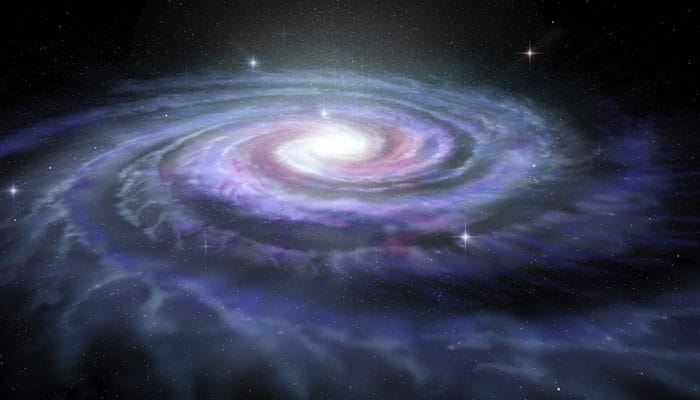Washington: Astronomers recently provided the details of unprecedented life story of Milky Way galaxy evolution through a movie by studying how galaxies like our own formed.
The most comprehensive multi-observatory galaxy surveys to date led by Texas AandM University's Casey Papovich , astronomers have come up with the next best thing, the evolution of the Milky Way in pictures, pieced together using data from NASA and European Space Agency space telescopes and ground-based telescopes as well as thousands of snapshots of galaxies similar in mass to the Milky Way.
Papovich, along with Texas AandM postdoctoral researchers Vithal Tilvi and Ryan Quadri and roughly two dozen astronomers around the world, spent a year studying carefully selected distant galaxies similar in mass to the progenitor of our own Milky Way that were found in two deep-sky program surveys of the universe, the Cosmic Assembly Near-infrared Deep Extragalactic Legacy Survey (CANDELS) and the FourStar Galaxy Evolution Survey (ZFOURGE).
First, the group looked at the more than 24,000 galaxies included in the combined catalog to identify representative galaxies that evolved as our Milky Way did. Then, they made a sequence of how those galaxies grew over time to represent how our own galaxy would have evolved, in effect creating a "movie" of the Milky Way's life from youth to middle age.
Papovich said that the team's data clearly illustrated that the Milky Way experienced its most rapid phase of growth between 9.2 and 10 billion years ago, churning out new stars at a spectacular rate that was about 30 times what it is today - one per year, compared to about 30 each year 9.5 billion years ago.
Not surprisingly, it also revealed a strong correlation between star formation and growth ingalaxy size, suggesting that the Milky Way itself was responsible for its own star-generating, and therefore, staying power.
It was also noted that the Sun was among those more recently formed stars, born roughly 5 billion years ago at a point when star formation within the Milky Way had slowed to a comparatively cosmic crawl that continues today. The Sun's somewhat fashionably late appearance actually might have been fortuitous, fostering the growth of the planets within the solar system.
The study is published in The Astrophysical Journal.
















